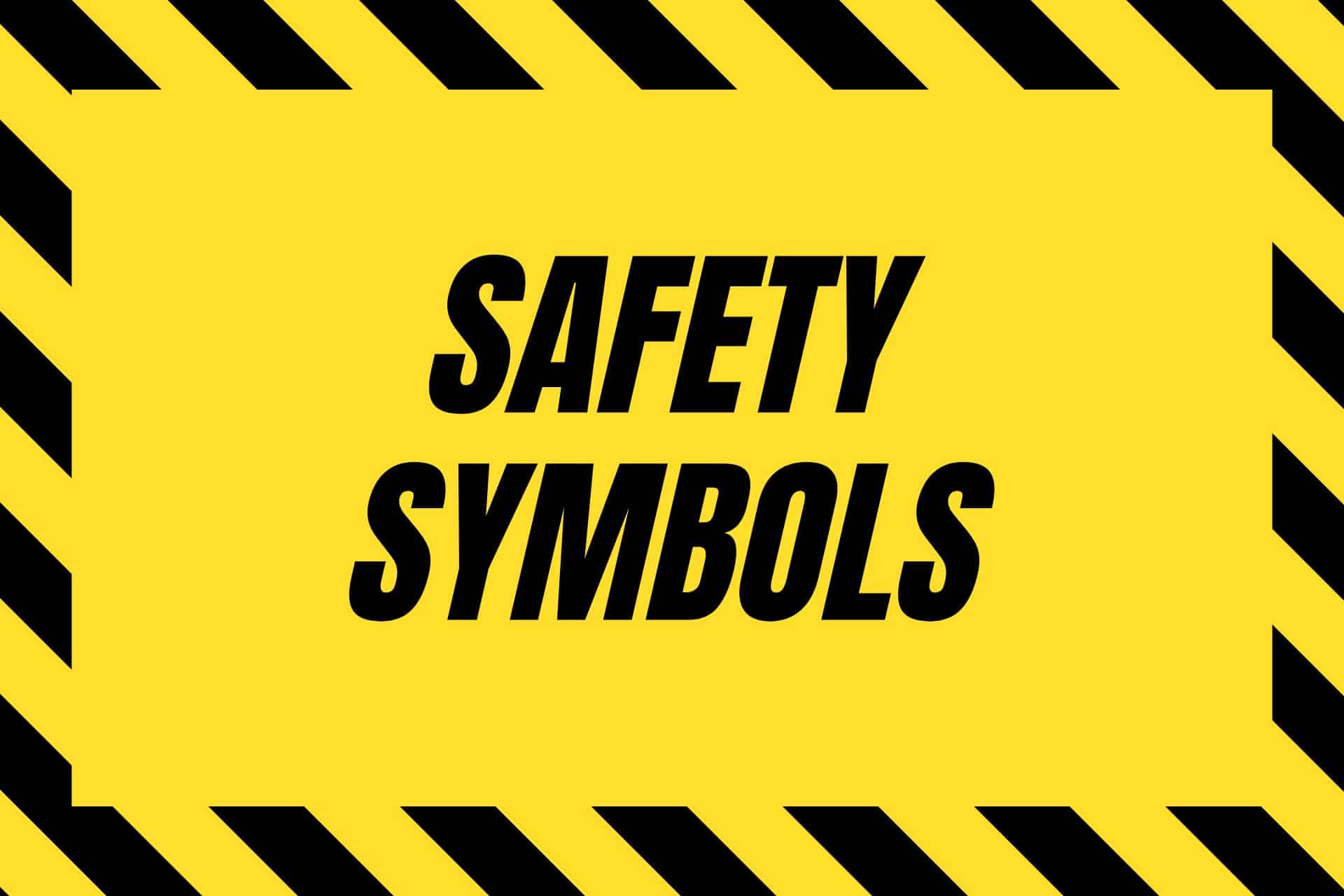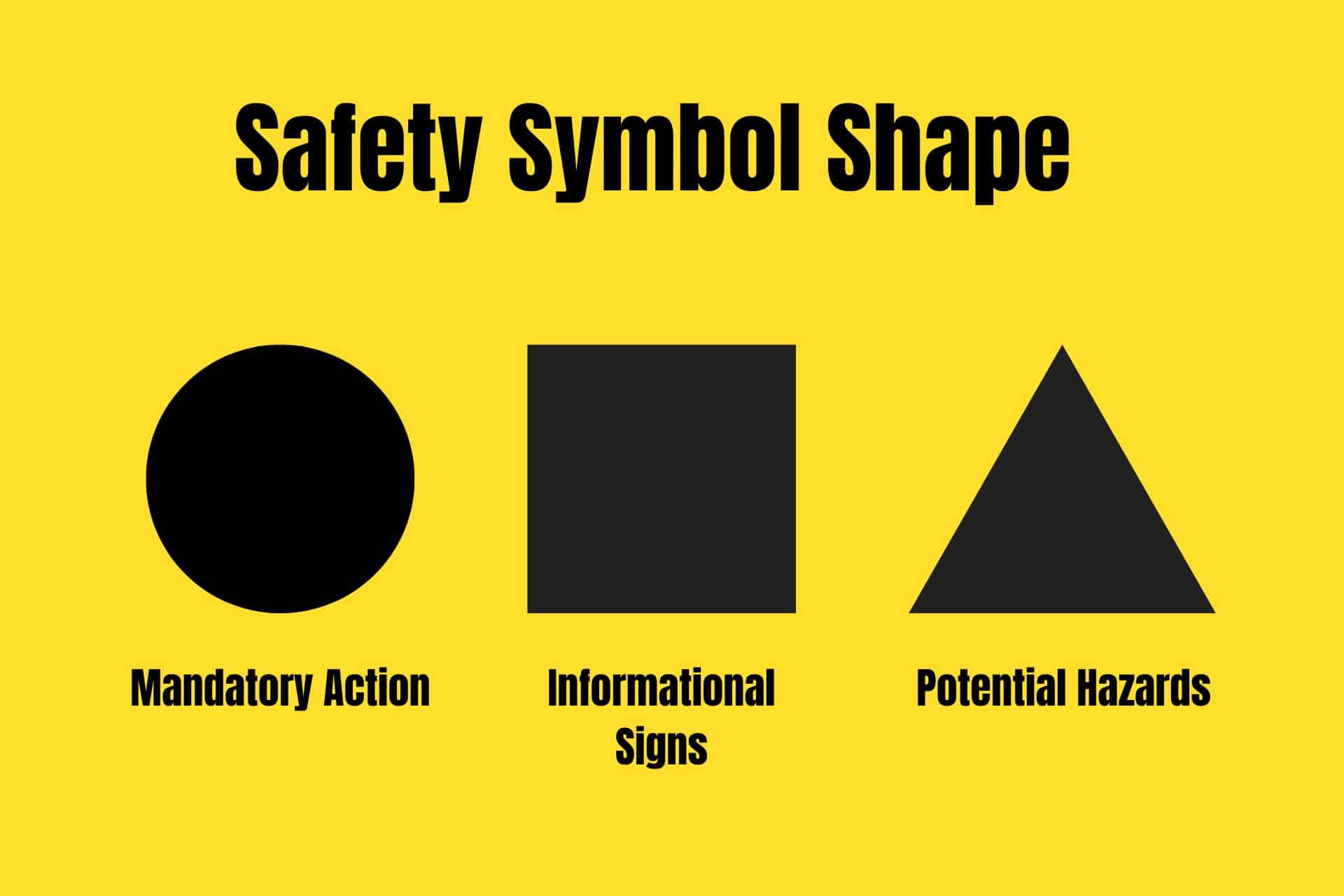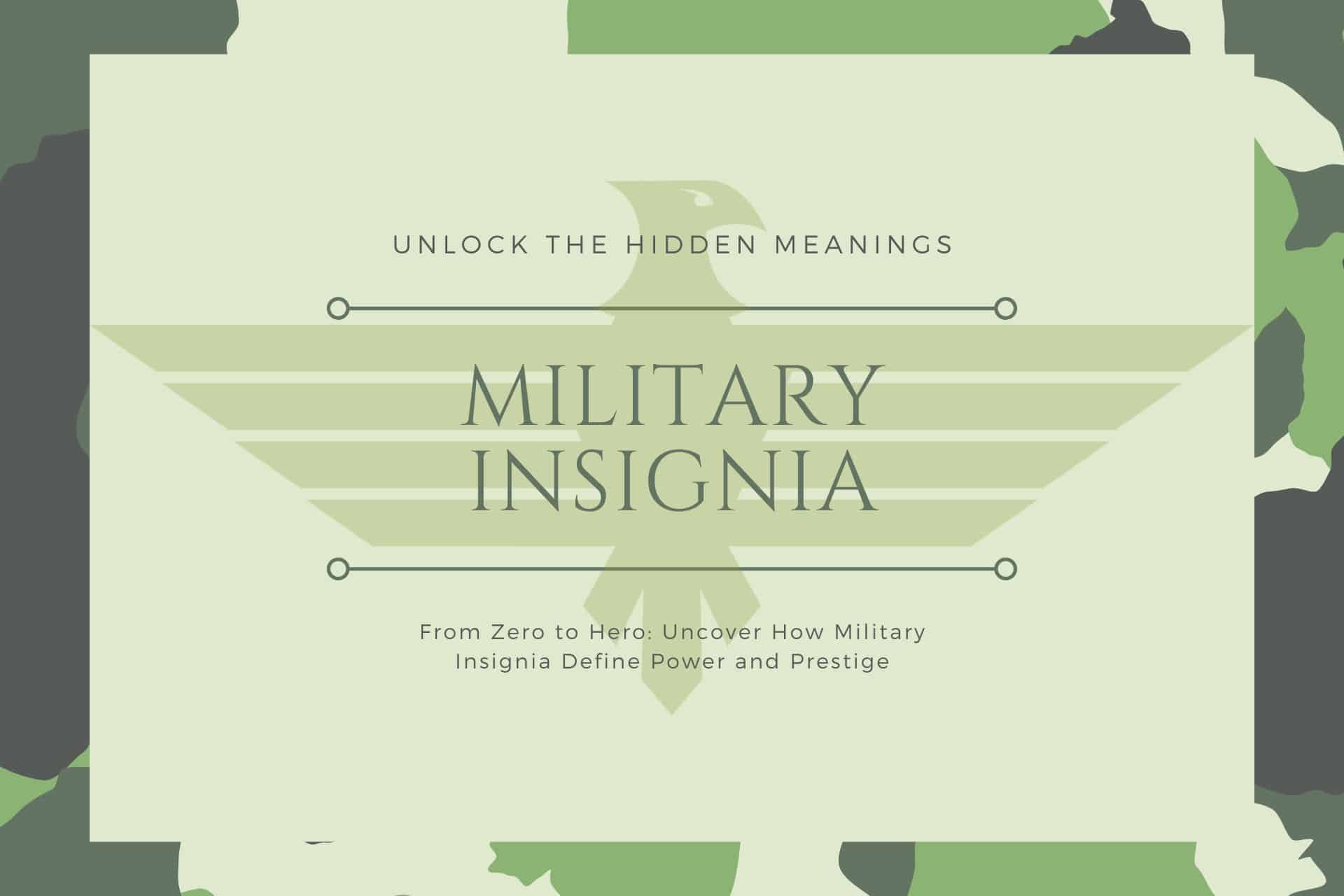The Ultimate Guide to Deciphering Hidden Warnings!
Are you curious about the signs and symbols you encounter daily that keep you safe?
This article guides you through deciphering these crucial safety symbols, offering insights into their history, meaning, and global variation. Understanding safety symbols enhances personal and public safety.
Continue reading to uncover how these safety symbols function as silent guardians in everyday life, ensuring you’re informed and prepared in various settings.
Let’s get started!

Here’s What You Will Find

Key Takeaways
Safety Symbols
Safety Symbols are Universal Languages: These symbols communicate essential safety information across language and cultural barriers, using specific shapes, colors, and images to signal hazards, mandatory actions, and safe practices.
Understanding is Key to Prevention: Familiarizing yourself with different safety symbols – such as hazard warnings, mandatory actions, and emergency information – can significantly reduce the risk of accidents and improve safety in everyday environments.
Categories of Safety Symbols: Safety symbols are categorized into hazard warnings, mandatory actions, prohibitions, emergency information, and more, each designed to address specific safety messages and encourage appropriate responses.
Sharing Increases Safety Awareness: Spreading knowledge about safety symbols and their meanings can help build a culture of safety and awareness, protecting ourselves and those around us in various settings.
What is a Safety Symbol?
A safety symbol is a sign or emblem designed to alert, warn, or inform individuals about potential hazards, mandatory actions, prohibitions, or safety procedures in their surroundings. Its purpose is to prevent accidents and injuries.
These safety symbols are universally recognized visual cues that convey essential safety information quickly and effectively, transcending language barriers.
Safety symbols are crucial in maintaining safety in various environments, including workplaces, public spaces, and households. International and national regulations standardize safety symbols to ensure consistency and understanding across different contexts and cultures.
Did You Know?
At its core, a safety symbol is a sign designed to warn about hazards, indicate mandatory actions or prohibitions, guide to safety equipment, or provide emergency information. These symbols are crafted to grab attention, convey messages clearly and quickly, and be understood by people regardless of language, culture, or literacy level.
Safety symbols are categorized into different types to address specific safety messages, such as hazard warnings, mandatory actions, prohibitions, emergency information, etc.
Each category conveys its message using distinct shapes, colors, and pictograms. For instance, a red circle with a diagonal line indicates prohibition, while a yellow triangle warns of potential hazards.
These symbols’ design is based on clarity, universality, and instant recognition principles. It aims to draw immediate attention and prompt the appropriate response to ensure everyone’s safety and well-being.
Types of Safety Symbols
Safety symbols fall into several categories, each distinguished by specific shapes and colors that adhere to international standards. For instance, hazard symbols often feature a yellow triangle with a black border, warning of potential dangers like chemical, electrical, or physical hazards.
Mandatory action symbols, depicted with a blue circle, instruct on essential actions like wearing protective equipment. Prohibition symbols, recognizable by their red circle with a diagonal line, clearly communicate forbidden actions such as smoking or entering restricted areas.
Meanwhile, green signs often indicate emergency information and guide individuals to exits, first aid stations, or emergency equipment.
Hazard Symbols
Hazard symbols alert people to the presence of hazardous materials or environments that pose threats to health and safety. These symbols are crucial in chemical plants, laboratories, and industrial settings.
- Chemical Hazards: Represent substances that could cause injury or illness if ingested, inhaled, or contacted with skin. An example is the symbol for corrosive substances, depicting material dripping on a hand and a surface, indicating the potential for eating away at the material.
- Biological Hazards: Indicate the presence of microorganisms or toxins that could harm health. The biohazard symbol, with its three interlocking circles, is universally recognized.
- Radiation Hazards: Warn of areas or materials containing radioactive substances or ionizing radiation. The trefoil symbol is commonly used, representing radiation spreading out from a central point.
- Flammable Materials: Denote substances that can easily ignite and cause a fire. The flame symbol is used to signify this hazard.
- Electrical Hazards: Alert to the risk of electric shock or electrocution. A lightning bolt or the symbol of a hand touching a lightning bolt is typically used.
- Explosive Materials: This symbol warns of chemicals or environments where explosions could occur. It usually features a stylized explosion or bomb.
Mandatory Action Symbols
These symbols specify actions that must be taken to ensure safety, prominently displayed in areas where specific actions are crucial for avoiding hazards.
- Wearing Personal Protective Equipment (PPE): Indicates the need for protective gear. Symbols include a helmet for head protection or goggles for eye protection.
- Specific Actions Required for Safety: Direct specific behaviors to maintain safety, such as symbols instructing people to wash hands or wear ear protection to prevent hearing damage.
Prohibition Symbols
Prohibition symbols communicate actions or behaviors that are not allowed, helping to prevent accidents and maintain a safe environment.
- No Smoking: This symbol indicates areas where smoking is prohibited, often to prevent fire hazards. It features a cigarette with a line through it.
- No Access for Unauthorized Persons: Signifies areas where entry is restricted, often for safety or security reasons. A figure with a barred circle over it is used.
- No Eating or Drinking: This is used in environments where food or beverages could pose health risks or contaminate products. The symbol shows a utensil and a cup with a line through them.
Warning Symbols
Warning symbols alert to potential dangers, enabling individuals to take precautions to avoid accidents and injuries.
- Slippery Surfaces: Warns of floors that could cause slips and falls. A pictogram of a person slipping is often used.
- High Voltage: Indicates the presence of high electrical voltage that could cause shock or electrocution, usually with a lightning bolt inside a triangle.
- General Warning for Potential Hazards: A generic warning symbol, often an exclamation mark within a triangle, denotes a range of potential dangers.
Emergency Information Symbols
These symbols quickly identify emergency equipment or exits, which are crucial for guiding individuals to safety during crises.
- Emergency Exits: Shows the direction to the nearest exit in an emergency, typically featuring a running figure and an exit sign.
- First Aid Stations: Identifies the location of first aid supplies using a white cross on a green background.
- Locations of Fire Extinguishers: Marks where fire extinguishers are located, often with a fire extinguisher symbol.
- Assembly Points: Designates safe areas to gather during an evacuation, usually indicated by figures standing under a point.
Fire Safety Symbols
Fire safety symbols are specific to firefighting equipment and fire hazards, guiding actions in fire emergencies.
- Fire Alarm Activation Points: Indicates where fire alarms can be triggered, typically showing a bell or an alarm.
- Fire Hose Locations: Marks where fire hoses are stored, often with a hose reel symbol.
- Fire Extinguisher Types and Locations: Identifies different fire extinguishers and locations, using symbols specific to the extinguisher’s contents (water, foam, CO2, etc.).
Environmental Symbols
Environmental symbols aim to protect the environment and public health by signaling areas of ecological sensitivity or guiding waste management.
- Recycle or Waste Disposal Indications: Encourage recycling or proper waste disposal, often depicted with the recycling symbol of three arrows in a triangle.
- Protected Wildlife Areas: Warn that an area is home to protected wildlife, typically using symbols of animals or plants.
- Noise Pollution Warnings: Indicate areas where noise levels are monitored or restricted, sometimes represented by an ear with sound waves.
Health and Safety (H&S) Signs
Health and Safety signs provide general health and safety information, fostering a safe and healthy environment in workplaces and public areas.
- Hygiene Practices: Promote cleanliness and hygiene, such as handwashing symbols.
- Safety Reminders: Provide reminders for safety practices, such as “Mind Your Head” signs to prevent head injuries.
- General Health Advisories: Provide advice on maintaining health, such as reminders to stay hydrated or take regular breaks.
Each category of safety symbols plays a vital role in preventing harm and ensuring well-being in various environments, from workplaces and public spaces to homes and recreational areas. Recognizing and understanding these symbols is essential for everyone’s safety.
The Role of Color and Shape
The role of color and shape in the design of safety symbols is pivotal, utilizing a sophisticated and deliberate system to ensure messages are seen, felt, and understood at a glance.
The choice of colors and shapes is far from arbitrary, each selected for its ability to grab attention, evoke an emotional response, and prompt immediate action or caution.
Color
Colors like red are not just eye-catching; they carry universal associations with stop, danger, or prohibited actions, making them indispensable in creating symbols that communicate warnings or forbidden behaviors.
Similarly, green often denotes safety or the go-ahead, used in exit signs or safe condition symbols to guide individuals toward safety.
Shapes
Shapes further refine the message, with each form chosen for its ability to suggest a specific type of information. With their continuous line, circles indicate mandatory actions—like the need to wear safety gear.
Triangles pointing upwards naturally draw the eye and alert to potential hazards. In contrast, squares or rectangles, with their stable and familiar form, are often used for informational signs, providing clear, straightforward guidance or instructions.

Safety symbols’ strategic use of color and shape creates intuitive and effective visual shorthand, enabling them to fulfill their crucial role in communication. This synergy ensures that safety messages are noticed and understood universally, transcending language barriers and cultural differences to promote safety and prevent harm.
History and Evolution of Safety Symbols
The concept of using symbols to communicate safety information is not new.
Historically, symbols have been used to warn, guide, and inform various cultures and societies. However, the modern system of safety symbols, as we know it, began to take shape in the 20th century, with the Industrial Revolution and the subsequent increase in complex machinery and chemical processes.
The need for standardized safety communication became evident as industries grew and international trade expanded.
Development of International Standards
One landmark in the evolution of safety symbols is the establishment of ISO 7010, an international standard that specifies safety signs for the purposes of accident prevention, fire protection, health hazard information, and emergency evacuation. ISO 7010 ensures consistency and universality in safety symbols, making them recognizable and understandable worldwide, regardless of linguistic differences.
Case Studies
A compelling example of how specific safety symbols were developed is the biohazard symbol, created in 1966 by Charles Baldwin, an environmental health engineer.
He designed it to be memorable but meaningless so it wouldn’t be confused with symbols for other purposes. Today, it’s universally recognized and denotes biological hazards, from medical waste to laboratories dealing with infectious agents.
The Importance of Safety Symbols in Everyday Life
Safety symbols are omnipresent, yet their constant presence might lead us to overlook their importance. They are crucial in preventing accidents, reducing risk, and ensuring a safe environment in various settings, from the workplace to public spaces and even at home. Awareness and understanding of these symbols can significantly impact our well-being and safety.
Real-life Examples
Consider the fire extinguisher symbol, a common sight in buildings. Knowing its location can make a difference in emergencies. Similarly, the wet floor symbol warns us to tread carefully to prevent slips and falls. These everyday symbols are key to avoiding injuries and maintaining safety in our daily routines.
Impact on Public Health and Safety
The widespread use and recognition of safety symbols have undoubtedly contributed to improvements in public health and safety. By providing a clear, immediate understanding of potential hazards and necessary precautions; safety symbols play a pivotal role in accident prevention and emergency response.
Awareness Prevents Accidents
Educating ourselves and others about the meaning and importance of safety symbols is a proactive step toward preventing accidents and injuries. Familiarity with these symbols enables us to navigate safely through various environments and make informed decisions to protect ourselves and those around us.
Navigating the World of International Safety Symbols
The need for a universal safety language cannot be overstated in our interconnected world. International safety symbols serve as this critical lingua franca, transcending linguistic and cultural barriers to communicate vital safety information. These symbols, standardized through collaborative international efforts, ensure that the message of safety is clear and actionable no matter where you are on the globe.
The Foundation of International Standards
The work of standardizing bodies, such as the International Organization for Standardization (ISO) and the International Electrotechnical Commission (IEC), is the cornerstone of international safety symbols.
Standards like ISO 7010, “Graphical symbols—Safety colors and safety signs—Registered safety signs,” provide a framework for designing, understanding, and using safety symbols worldwide.
These standards are developed through extensive research and global consensus to ensure that each symbol is universally recognizable and understood, regardless of local language or cultural nuances.
Universal Symbols for a Safer World
International safety symbols cover a broad spectrum of safety notices, from fire safety and emergency exits to warnings about hazardous materials and instructions for personal protective equipment.
For instance, the symbol of a white flame on a blue background universally indicates that you must wear fire-resistant gloves. Similarly, a green running man towards a door signifies an emergency exit, offering a beacon of guidance towards safety in times of need.
These symbols are meticulously designed to be self-explanatory. A combination of specific shapes, colors, and pictograms conveys the intended message succinctly and effectively.
For example, red circles with a diagonal line universally denote prohibition, such as no smoking or no entry, while yellow triangles with a black border signal caution, alerting to potential hazards like slippery floors or chemical substances.
Challenges and Solutions in Global Safety Communication
Despite the strides made towards global standardization, challenges remain. Differences in cultural interpretations of colors and shapes can lead to variations in understanding and compliance.
International standards are periodically reviewed and updated to address these challenges, and efforts are made to educate and raise awareness about the significance and meaning of these symbols across different regions.
Moreover, technology plays a pivotal role in overcoming these challenges. Digital platforms and mobile applications offer new avenues for disseminating information about safety symbols, providing interactive learning tools and up-to-date guidance on global best practices in safety communication.
Embracing International Safety Symbols
As global citizens, understanding and adhering to international safety symbols is imperative. Whether traveling abroad, working in multinational environments, or simply navigating the global marketplace, these symbols are vital to ensuring our safety and the safety of those around us.
By familiarizing ourselves with these universal signs, we contribute to a culture of safety and awareness that transcends borders, making our world safer for everyone.
Safety Symbols Around the World
While safety symbols’ goal is universal—to inform and protect—their design and implementation can vary across different countries and cultures. This section explores the diversity and challenges of standardizing safety symbols worldwide alongside intriguing examples from various regions.
Comparing Safety Symbols Across Different Countries
Although international standards like ISO 7010 aim to harmonize safety symbols, local variations still exist. For example, while the symbol for a fire extinguisher is widely recognizable, subtle differences in design might be found from one country to another. These differences often reflect cultural nuances and historical developments in safety regulations.
Challenges in Standardization
One of the main challenges in standardizing safety symbols is ensuring they are understood across diverse cultural contexts. Something intuitive in one culture might not be in another, necessitating adaptations or additional education to bridge the understanding gap.
Unique Safety Symbols
Some regions have developed unique safety symbols based on local needs and cultural interpretations. For instance, in Japan, symbols used in public transportation and disaster preparedness are particular and tailored to communicate effectively with the local population.
These symbols reflect universal safety concerns and specific cultural or environmental conditions.
Modern Advances and Technology in Safety Symbol Communication
As technology evolves, so does the way we communicate safety. Digital and interactive safety symbols represent the frontier of how information is conveyed in an increasingly connected and tech-savvy world.
Digital and Interactive Safety Symbols
Digital signage and augmented reality (AR) applications are revolutionizing safety communication. They offer dynamic and interactive ways to alert people to hazards and guide them to safety.
For example, AR can overlay digital safety symbols onto real-world environments through smartphones or AR glasses, providing real-time, context-specific safety information.
Future Trends
The future of safety symbols lies in their integration with intelligent technology and the Internet of Things (IoT). Imagine innovative workplaces or public spaces where safety symbols are dynamically displayed based on real-time conditions, enhancing situational awareness and personal safety.
Improving Effectiveness
Technological advances in safety symbol communication aim to improve their effectiveness by making them more attention-grabbing, relevant, and understandable. Integrating technology in safety signage promises to bring about even greater improvements in public safety and individual awareness.
Engaging with Safety Symbols: Tips and Best Practices
Understanding and engaging with safety symbols is a shared responsibility. Here are some tips and best practices for individuals, families, businesses, and public institutions to promote safety awareness and compliance.
Staying Informed
Keeping up-to-date with safety symbols and their meanings is crucial for everyone. Resources like the ISO website, safety organizations, and government health and safety departments provide valuable information and updates on safety symbols and practices.
Teaching Safety Symbols
Education plays a key role in safety awareness. Teaching children about safety symbols from an early age can instill lifelong habits of caution and awareness. Similarly, workplaces should regularly train employees on safety symbols relevant to their environment, ensuring everyone understands the symbols they might encounter daily.
Displaying Safety Symbols Properly
Properly displaying safety symbols is not just a legal requirement but a moral obligation for businesses and public spaces. Signs should be prominently placed, maintained in good condition, and updated as necessary to reflect current standards and conditions.
FAQs: Answering Your Questions
What is the universal safety symbol?
While there is no singular “universal safety symbol” due to the diversity of safety warnings needed across various contexts, symbols like the biohazard signs for biological hazards, the radiation trefoil for radioactive materials, and the skull and crossbones for poison are among the most globally recognized for their specific safety warnings.
What are the 4 types of safety?
The four types of safety typically refer to categories designed to protect individuals and ensure a safe environment. These are:
- Physical Safety: Protects against physical hazards and harm that could affect the body due to accidents, environmental factors, or physical attacks.
- Psychological Safety: Ensures an environment where individuals feel emotionally protected and free to express thoughts and feelings without fear of negativity or reprisal.
- Social Safety: Involves creating a safe and supportive social environment where individuals are protected from discrimination, harassment, and bullying, promoting inclusivity and respect.
- Moral Safety: Pertains to ensuring ethical standards are maintained, and individuals can act according to their moral and ethical beliefs without fear of judgment or punishment, fostering an environment of integrity and trust.
What is the most important safety symbol?
While it’s difficult to single out one symbol as the most important, the emergency exit sign is crucial in nearly all public spaces and workplaces, guiding people to safety during emergencies.
Can safety symbols differ by industry?
Yes, safety symbols can vary significantly across different industries, reflecting the specific hazards and safety requirements of each sector. For example, symbols used in chemical manufacturing might not be found in office environments.
How can I learn more about safety symbols?
Many resources are available for those interested in learning more about safety symbols, including government health and safety websites, international standardization organizations like ISO, and educational platforms offering courses on workplace safety.
Last Thoughts
Safety symbols are essential to our daily lives, guiding us away from danger and toward safety. Their simple designs hide complex meanings, developed through years of refinement and standardization. Understanding and respecting these symbols can protect ourselves and others, contributing to a safer world for everyone.
Encourage your friends and family to learn more about safety symbols. Sharing knowledge about these critical signs can make a difference in someone’s life, helping them navigate safely through familiar and new environments. Safety is a personal concern and a collective responsibility.
Let’s all play our part in creating safer communities, one symbol at a time.
Before You Go
We hope you’ve found this exploration of safety symbols enlightening and valuable. Sharing this knowledge with friends, family, and colleagues can significantly enhance their understanding of these critical signs, potentially safeguarding their well-being in daily situations.
By spreading the word, you’re not just passing on information; you’re contributing to a culture of safety and awareness that benefits everyone. So, we encourage you to share this article and start conversations about recognizing and understanding safety symbols. Together, we can make our environments safer for all.
More on Safety Symbols
- Hazard Symbols
- Mandatory Action Symbols
- Prohibition Symbols
- Warning Symbols
- Emergency Information Symbols
- Fire Safety Symbols
- Environmental Symbols
- Health and Safety (H&S) Signs
More on Symbols
History of Symbols: How Ancient Marks Shape Our Modern World!
From Cave Walls to Emojis—A Journey Through Time Have you ever wondered about the history of symbols? Maybe you’ve wondered about their global variations or how they’ve shaped our world. Prepare to have your curiosity …
Check it Out!Tattoos and Their Secret Powers: How Ink Can Change Your Life!
Exploring the Art, Meaning, and Culture of Ink! Are you intrigued by tattoos? Are you curious about the stories they tell and the intricate details they contain? Look no further. You might be wondering about …
Check it Out!Masonic Symbols Unlocked: Discover the Secret Meanings Behind the World’s Most Mysterious Icons!
The Hidden Powers and Ancient Secrets You Never Knew! Are you intrigued by masonic symbols and their profound meanings? Perhaps you’ve seen the square, compasses, or the all-seeing eye and wondered about their significance? Thankfully, …
Check it Out!Military Insignia: Unlock the Hidden Meanings Behind These Powerful Symbols
From Zero to Hero: Uncover How Military Insignia Define Power and Prestige Are you curious about the meaning behind military insignia or rank emblems? Have you ever wondered about their significance or history? This comprehensive …
Check it Out!More Symbols

















